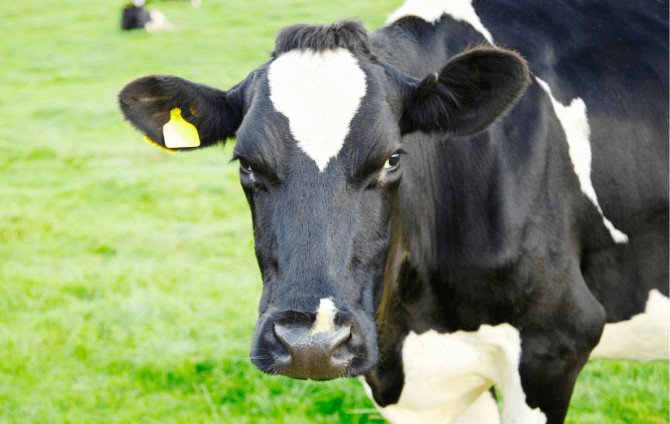
In Canada, there are approximately 1.4 million dairy cattle on over 9,000 farms across the country. Dairy farming is the top agricultural industry in B.C. – there are over 400 farms across the province with an average of 150 cows per farm.
For a cow to produce milk, she must give birth to a calf. A female that has not yet given birth is called a heifer. Heifers are bred for the first time around 12-15 months of age. Breeding is typically done through artificial insemination. After a nine-month pregnancy, the heifer will give birth to her first calf, after which they are referred to as cows (adult females).
After giving birth to a calf, the cow begins her lactation (producing milk). The cow and calf are usually separated a few hours after birth – the calf will be fed by caretakers while the cow enters the milking herd. About three months after giving birth, the cow is re-bred. Cows will produce milk for about 10 months. When her milk production drops, farmers will adjust milking and/or feeding to stop milk production. This creates a two-month “dry” period to prepare for the birth of her next calf. Once the next calf is born, a new lactation starts, and this cycle repeats.
Cows are usually milked two or three times each day, each producing an average of 30 litres of milk daily.
Most cows will stay in the milking herd, repeating the cycle of breeding and lactation, for about five years. After this point, their milk production decreases, and the cows are typically sold to be slaughtered for beef. This is much shorter than their natural lifespan of 15 to 20 years.